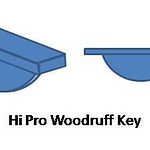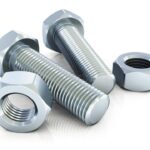Today we will learn about extrusion process working, types, application, advantages and disadvantages. Extrusion is a metal forming process in which metal or work piece is forced to flow through a die to reduce its cross section or convert it into desire shape. This process is extensively used in pipes and steel rods manufacturing. The force used to extrude the work piece is compressive in nature. This process is similar to drawing process except drawing process uses tensile stress to extend the metal work piece. The compressive force allows large deformation compare to drawing in single pass. The most common material extruded are plastic and aluminum.
Extrusion Process:
Working Principle:
Extrusion is a simple compressive metal forming process. In this process, piston or plunger is used to apply compressive force at work piece. These process can be summarized as follow.
- First billet or ingot (metal work piece of standard size) is produced.
- This billet is heated in hot extrusion or remains at room temperature and placed into a extrusion press (Extrusion press is like a piston cylinder device in which metal is placed in cylinder and pushed by a piston. The upper portion of cylinder is fitted with die).
- Now a compressive force is applied to this part by a plunger fitted into the press which pushes the billet towards die.
- The die is small opening of required cross section. This high compressive force allow the work metal to flow through die and convert into desire shape.
- Now the extruded part remove from press and is heat treated for better mechanical properties.
This is basic working of extrusion process.
Types of Extrusion:
Extrusion process can be classified into following types.
According to the direction of flow of metal
Direct Extrusion:
In this type of extrusion process, metal is forced to flow in the direction of feed of punch. The punch moves toward die during extrusion. This process required higher force due to higher friction between billet and container.
Indirect Extrusion:
In this process, metal is flow toward opposite direction of plunger movement. The die is fitted at opposite side of punch movement. In this process, the metal is allowed to flow through annular space between punch and container.
Hydrostatic Extrusion:
This process uses fluid to apply pressure on billet. In this process, the friction is eliminated because the billet is neither contact with cylinder wall or plunger. There is a fluid between the billet and plunger. The plunger applies force on fluid which further applied on billet. Normally vegetable oils are used as fluid.This process accomplished by leakage problem and uncontrolled speed of extrusion.
According to the working temperature
Hot Extrusion:
If the extrusion process takes place above recrystallization temperature which is about 50-60% of its melting temperature, the process is known as hot extrusion.
Advantages:
- Low force required compare to cold working.
- Easy to work in hot form.
- The product is free from stain hardening.
Disadvantages:
- Low surface finish due to scale formation on extruded part.
- Increase die wear.
- High maintenance required.
Cold Extrusion:
If the extrusion process takes place below crystallization temperature or room temperature, the process is known as cold extrusion. Aluminum cans, cylinder, collapsible tubes etc. are example of this process.
Advantages:
- High mechanical properties.
- High surface finish
- No oxidation at metal surface.
Disadvantages:
- High force required.
- Product is accomplished with strain hardening.
Application:
- Extrusion is widely used in production of tubes and hollow pipes.
- Aluminum extrusion is used in structure work in many industries.
- This process is used to produce frames, doors, window etc. in automotive industries.
- Extrusion is widely used to produce plastic objects.
Advantages and Disadvantages:
Advantages:
- High extrusion ratio (It is the ratio of billet cross section area to extruded part cross section area).
- It can easily create complex cross section.
- This working can be done with both brittle and ductile materials.
- High mechanical properties can achieved by cold extrusion.
Disadvantages:
- High initial or setup cost.
- High compressive force required.
Today we have learnt about extrusion process working, types, application, advantages and disadvantages. If you have any query regarding this article, ask by commenting. If you like this article, don’t forget to share it on social networks. Subscribe our website for more interesting articles. Thanks for reading it.













good note
I want note